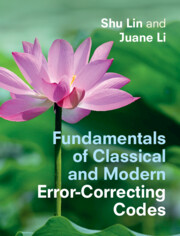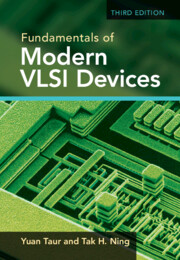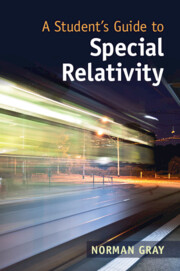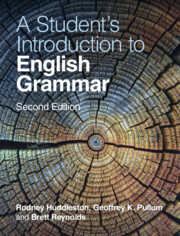Refine search
Actions for selected content:
36846 results in Cambridge Textbooks
Tables
-
- Book:
- Introducing Language and Society
- Published online:
- 17 January 2022
- Print publication:
- 03 February 2022, pp xiii-xiv
-
- Chapter
- Export citation
5 - The Lorentz Transformation
-
- Book:
- A Student's Guide to Special Relativity
- Published online:
- 26 January 2022
- Print publication:
- 03 February 2022, pp 72-102
-
- Chapter
- Export citation
3 - Length Contraction and Time Dilation
-
- Book:
- A Student's Guide to Special Relativity
- Published online:
- 26 January 2022
- Print publication:
- 03 February 2022, pp 32-44
-
- Chapter
- Export citation
Appendix A - An Overview of General Relativity
-
- Book:
- A Student's Guide to Special Relativity
- Published online:
- 26 January 2022
- Print publication:
- 03 February 2022, pp 145-176
-
- Chapter
- Export citation
Relativity’s Contact with Experimental Fact
-
- Book:
- A Student's Guide to Special Relativity
- Published online:
- 26 January 2022
- Print publication:
- 03 February 2022, pp 177-193
-
- Chapter
- Export citation
Maths Revision
-
- Book:
- A Student's Guide to Special Relativity
- Published online:
- 26 January 2022
- Print publication:
- 03 February 2022, pp 194-199
-
- Chapter
- Export citation
5 - The Lorentz Transformation
-
- Book:
- A Student's Guide to Special Relativity
- Published online:
- 26 January 2022
- Print publication:
- 03 February 2022, pp 72-102
-
- Chapter
- Export citation
Aims
-
- Book:
- A Student's Guide to Special Relativity
- Published online:
- 26 January 2022
- Print publication:
- 03 February 2022, pp xvi-xvi
-
- Chapter
- Export citation
Epigraph
-
- Book:
- A Student's Guide to Special Relativity
- Published online:
- 26 January 2022
- Print publication:
- 03 February 2022, pp v-vi
-
- Chapter
- Export citation
References
-
- Book:
- A Student's Guide to Special Relativity
- Published online:
- 26 January 2022
- Print publication:
- 03 February 2022, pp 204-210
-
- Chapter
- Export citation
2 - The Axioms
-
- Book:
- A Student's Guide to Special Relativity
- Published online:
- 26 January 2022
- Print publication:
- 03 February 2022, pp 18-31
-
- Chapter
- Export citation
Glossary
-
- Book:
- Introducing Language and Society
- Published online:
- 17 January 2022
- Print publication:
- 03 February 2022, pp 221-228
-
- Chapter
- Export citation
How to Do Calculations: a Recipe
-
- Book:
- A Student's Guide to Special Relativity
- Published online:
- 26 January 2022
- Print publication:
- 03 February 2022, pp 200-204
-
- Chapter
- Export citation

Fundamentals of Classical and Modern Error-Correcting Codes
-
- Published online:
- 02 February 2022
- Print publication:
- 09 December 2021
-
- Textbook
- Export citation

Fundamentals of Modern VLSI Devices
-
- Published online:
- 27 January 2022
- Print publication:
- 02 December 2021
-
- Textbook
- Export citation

A Student's Guide to Special Relativity
-
- Published online:
- 26 January 2022
- Print publication:
- 03 February 2022
-
- Textbook
- Export citation

A Student's Introduction to English Grammar
-
- Published online:
- 20 January 2022
- Print publication:
- 25 November 2021
-
- Textbook
- Export citation
1 - Introduction: History and Identity
-
- Book:
- History and Identity
- Published online:
- 04 February 2022
- Print publication:
- 20 January 2022, pp 1-33
-
- Chapter
- Export citation
10 - The History of Material Culture
-
- Book:
- History and Identity
- Published online:
- 04 February 2022
- Print publication:
- 20 January 2022, pp 235-260
-
- Chapter
- Export citation
Notes
-
- Book:
- History and Identity
- Published online:
- 04 February 2022
- Print publication:
- 20 January 2022, pp 310-396
-
- Chapter
- Export citation
